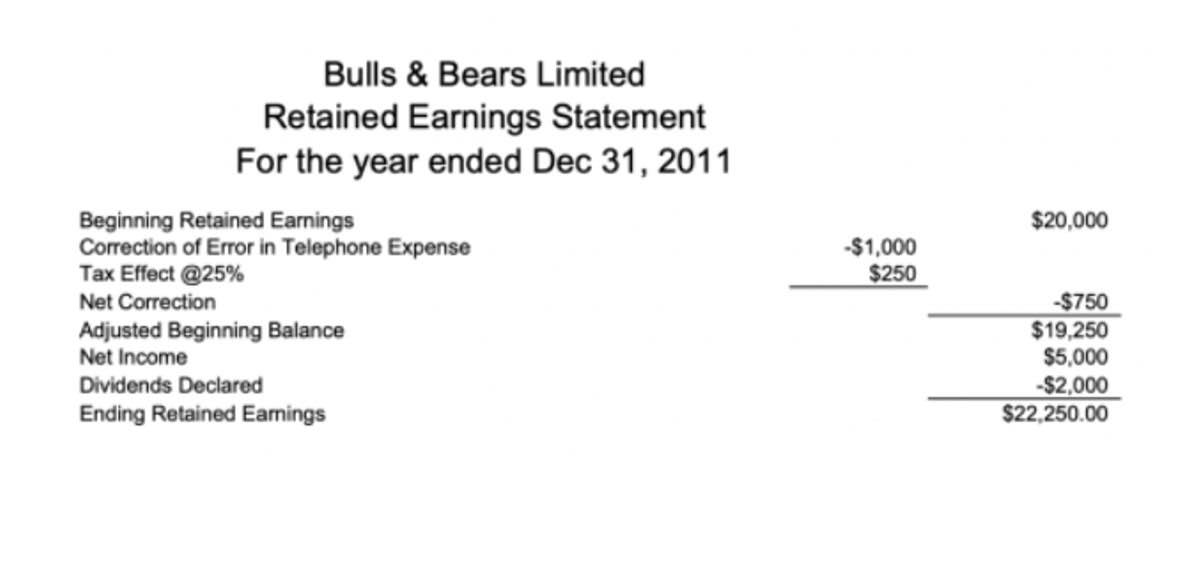
There isn’t a minimum amount needed to be approved, and each week your payment to Fundbox includes the small fee. Company A sends a Rs invoice to its customers to be paid in six months and a copy to its Factor, M/s X, in return for Rs 8500. On the due date (i.e., after six months), the customer pays the money, and Company A sends Rs to M/s X.M/s X charges 10% factor fees for the amount advanced to Company A and returns the balance amount to Company A. Credit RiskCredit risk is the probability of a loss owing to the borrower’s failure to repay the loan or meet debt obligations. It refers to the possibility that the lender may not receive the debt’s principal and an interest component, resulting in interrupted cash flow and increased cost of collection. These fees are steep, but if you’re tired of waiting on your customers and you need money to meet payroll or to pay off your suppliers, invoice factoring could be worth the price.

With non-recourse factoring, the factor takes responsibility for the invoice, even if they are unable to collect. Often, non-recourse factoring is only applied if the invoiced company files bankruptcy. In addition, fees for non-recourse factoring are much higher than those for non-recourse factoring. The first step in receiving factoring financing is to be pre-qualified by a factoring company or a bank’s factoring department. Factoring is commonplace in the construction industry because of the long payment cycles that can stretch to 120 days and beyond.
Will Factoring Invoices Hurt My Relationship With My Customers?
Factoringreceivables is the sale of accounts receivable for working capital purposes. A company will receive an initial advance, usually around 80% of the amount of an invoice when the invoice is purchased by the lender.
- It may not seem like a big deal, but if your customers find out you sold their invoices to get cash, they may think your business is struggling, which could affect future business transactions.
- Under a factoring contract, the business can usually pick and choose which invoices to sell to the factor-it is not typically an all-or-nothing scenario.
- Accounts receivable financing is more like a traditional bank loan but with several key differences.
- Factoringreceivables is the sale of accounts receivable for working capital purposes.
- He has worked more than 13 years in both public and private accounting jobs and more than four years licensed as an insurance producer.
The Wall Street Journal, «How to Use Factoring for Cash Flow»; small-business/funding. Excel Shortcuts PC Mac List of Excel Shortcuts Excel shortcuts – It may seem slower at first if you’re used to the mouse, but it’s worth the investment to take the time and… Notes receivable are written promissory notes that give the holder, or bearer, the right to receive the amount outlined in an agreement. The Banking Products and Services course is designed for those looking to become familiar with the products offered at global banks.
What Is Accounts Receivable Financing?
Accounts receivable factoring is a simple way to get paid faster – typically within 24 hours – for outstanding receivables. This amountdoes not provide any payment guaranteesfor the sold accounts receivable and such guarantees are not always available.
This might indicate to the customer that you’re having financial trouble. An Accounts Receivable Lender, or Factor, is a third-party firm which provides funding in two ways – by lending against a business’ accounts receivable or by purchasing it and providing cash based on unpaid invoices. Accounts receivable refers to the listing of monies owed to a creditor for goods or services s/he has provided. In accounts receivable factoring services, «accounts receivable» are the monies owed to small businesses by their customers. The factor purchases the invoices for these accounts receivable, providing payment to the small business and receiving payment from the small business’ customer. Although accounts receivable financing offers a number of diverse advantages, it also can carry a negative connotation. In particular, accounts receivable financing can cost more than financing through traditional lenders, especially for companies perceived to have poor credit.
Has a simple fee structure that helps the company track total costs on an invoice-by-invoice basis. You can use it as many times as you need—when a need arises you can utilize the service without having to reapply and it is flexible so it scales up with the growth of your business without lengthy paperwork. The holdback amount is the payment that the company pays the factor in case of non-payment.
- In your customer’s normal course of business, they will continue to make checks payable to your business but will be mailed to a special lockbox so we can collect the amounts due.
- An AR Facility will typically advance up to 85% or more of your invoice amount, as your business grows so can your total availability.
- MP Star Financial offers One Fee Factoring®, and a no-hidden-fees guarantee.
- Company A sends a Rs invoice to its customers to be paid in six months and a copy to its Factor, M/s X, in return for Rs 8500.
- It may also include background checks on signatories and owners of your business.
Credit is the educated evaluation of an individual or business’ ability to pay monies owed. Credit is also the amount available to a given person, business, or other entity to borrow at a given time. Cash flow is a measurement of an entity’s influx and output of money, generally measured over a set time period. Although this structure might be different from that of secured borrowing shown above, the accounting treatment is largely the same. Investopedia requires writers to use primary sources to support their work. These include white papers, government data, original reporting, and interviews with industry experts.
Factoring Accounts Receivable Is Easy With Our Factoring Company
Factoring is the conversion of accounts receivable into cash by selling outstanding invoices to a factor, such as PRN Funding. A viable option for companies in the early stages of business development and/or during rapid growth, factoring is a financial solution that gives companies immediate cash to manage operations more efficiently. PRN’s factoring 101 will help you understand all you need to know to get started. Unlike with traditional loans, Accounts Receivable Factoring typically does not require you to set aside additional assets as collateral. This makes factoring especially attractive for smaller businesses with fewer available assets to be used as potential collateral. Put simply, accounts receivable factoring entails selling your outstanding receivables to a third party— known as a factoring company or factor— typically for a set percentage of the outstanding amount. This percentage varies but it can be as high as 97% of the original value of the receivables.

Every accounts receivable factoring transaction begins with an invoice. The invoice must be accurate, unpaid, and for goods or services provided to another company. In other words, the nonrecourse factor who assumes credit risk bears the credit loss and incurs bad debt if a purchased account does not collect due solely to financial inability of the account debtor to pay. In the latter half of the twentieth century the introduction of computers eased the accounting burdens of factors and then small firms.
The Best Time To Post On Each Social Media Channel
The story starts where a business sells the goods/supply services on a “credit basis. Factoring receivables is a way to free up cash flow that’s held up in your unpaid invoices. Typically, the company will collect the payments on the business’s behalf. A bank line of credit is a source of funding extended to a company to help meet its liquidity needs. After approval of a certain amount of credit, it can be tapped at the company’s discretion. Interest is paid only on the funds actually borrowed, although some banks charge fees to establish the credit line and may also require you to pay an annualized fee on money not withdrawn. By partnering with a factoring company, you can get the money owed to you in your receivables faster than you would normally collect it.
Companies decide to factor their accounts receivable for several reasons. SAP provides the ability to mark factored invoices on the AR transactions but that does not provide accounting functionality for cash and balance sheet impacts. The cash accounting process needs to be built in conjunction with the cash application and clearing customer receivables. Factoring receivables provide the Company with a tool which will increase the cash flow based on accounts receivable documents for certain customers. Once invoices are selected by the factoring agent they need to be identified and marked in SAP for tracking purposes as well as reconciliation.
The Difference Between Factoring And Credit Insurance
Also, the factor may require a long-term contract with your business, which means giving up control of your invoices for longer than you desire. Before you jump into an invoice factoring agreement, be sure that this financing solution will improve your financial situation and provide long-term business success. Now that you have this guide on hand, you’re equipped to make an informed decision. When applying to traditional small business loans, you almost always need to provide a lot of information and documentation about your business before you’re approved. Without fail, lenders will scrutinize your personal credit score, financial health, and business history. So if you have a less-than-ideal credit score or you haven’t been in business for a long time, you won’t be eligible for many of the small business loans out there. When businesses need money, both traditional bank loans and factoring may come up as possible solutions, but the two are as different as night and day.
The great thing about factoring accounts receivable is that there is no need for you to have great credit. The really important decisions in an accounts receivables factoring transaction are based on the credit strength of your client base.
Factoring Accounts Receivable
Many small and midsize companies can’t afford to wait eight weeks to have an invoice https://www.bookstime.com/ paid. They need the funds sooner to pay employees, suppliers, and other costs.
Factoring With Or Without Recourse
Nearly all factors are recourse to avoid the risk of unpaid accounts. The factor does not have to deal with risks of non-performing accounts receivable. Companies also choose to factor when their customers require extended payment terms.
The Math Behind Accounts Receivables Factoring
Quality includes the punctuality and creditworthiness of a business’s customers. Factoring companies will offer ideal rates for receivables with high-quality payers — no factoring company wants to find themselves stuck with non-payers. The accounts receivable factoring rate often varies from industry to industry. For example, a factoring company will offer a different rate to a construction company compared to the rate provided to a retail company.
Pros And Cons Of Accounts Receivable Factoring
The same occurred for their ability to obtain information about debtor’s creditworthiness. Introduction of the Internet and the web has accelerated the process while reducing costs. Today credit information and insurance coverage are instantly available online. The web has also made it possible for factors and their clients to collaborate in real time on collections. Acceptance of signed documents provided by facsimile as being legally binding has eliminated the need for physical delivery of «originals», thereby reducing time delays for entrepreneurs.
One is actually a loan, while the other is the sale of an asset to a third party. If you currently allow clients to pay on termsand are constantly worrying about cash flow for your business, you should consider an AR Facility. Accelerating your client payments for working capital, business growth, or paying down your payables are all reasons you need to consider an AR Facility.














